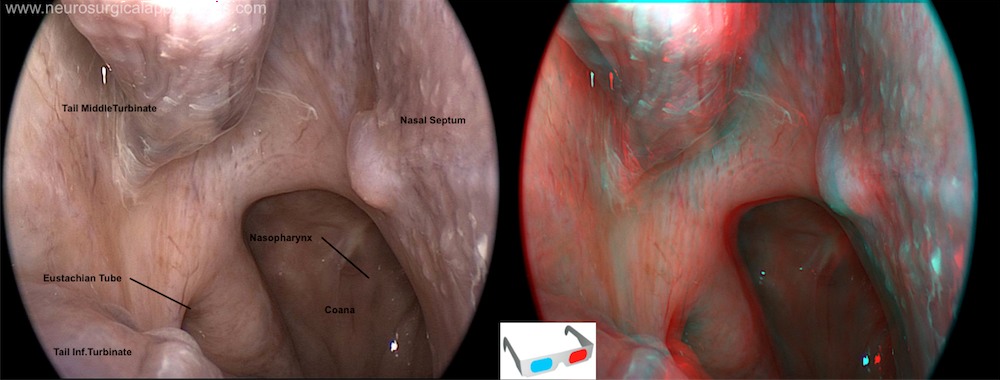Eustachian tube
The Eustachian tube /juːˌsteɪ.ʃənˈtjuːb/, also auditory tube or pharyngealtympanic tube, is a tube that links the nasopharynx to the middle ear. It is a part of the middle ear. In adult humans the Eustachian tube is approximately 35 mm (1.4 in) long. It is named after the sixteenth-century anatomist Bartolomeo Eustachi.
Some modern medical books call this the pharyngotympanic tube.
The eustachian tube (ET) is an important landmark in skull base surgery, which has a close relationship with the petrous segment of the internal carotid artery (ICA).
The cartilaginous ET was divided into four segments, from anterior to posterior: nasopharyngeal, pterygoid, lacerum, and petrosal segment. The anterior and inferior wall of the carotid canal was consistently between the horizontal ICA and petrous segment of the cartilaginous ET. In the posterior genu of the ICA, the bony part of the ET, and the tendon of the tensor tympani muscle were paramount landmarks. The posterior genu of the ICA was imbedded in the carotid canal. The landmarks of the junction of the cartilaginous ET and bony ET were the sphenoid spine and foramen spinosum.
The anatomical segmentation of the ET provides the basis for safe and effective transection of the ET in skull base surgery. An understanding of the complex relationships of the ET and petrous segment of the ICA is paramount for surgically dealing with disease located within the region of the ET and petrous segment of the ICA 1).
